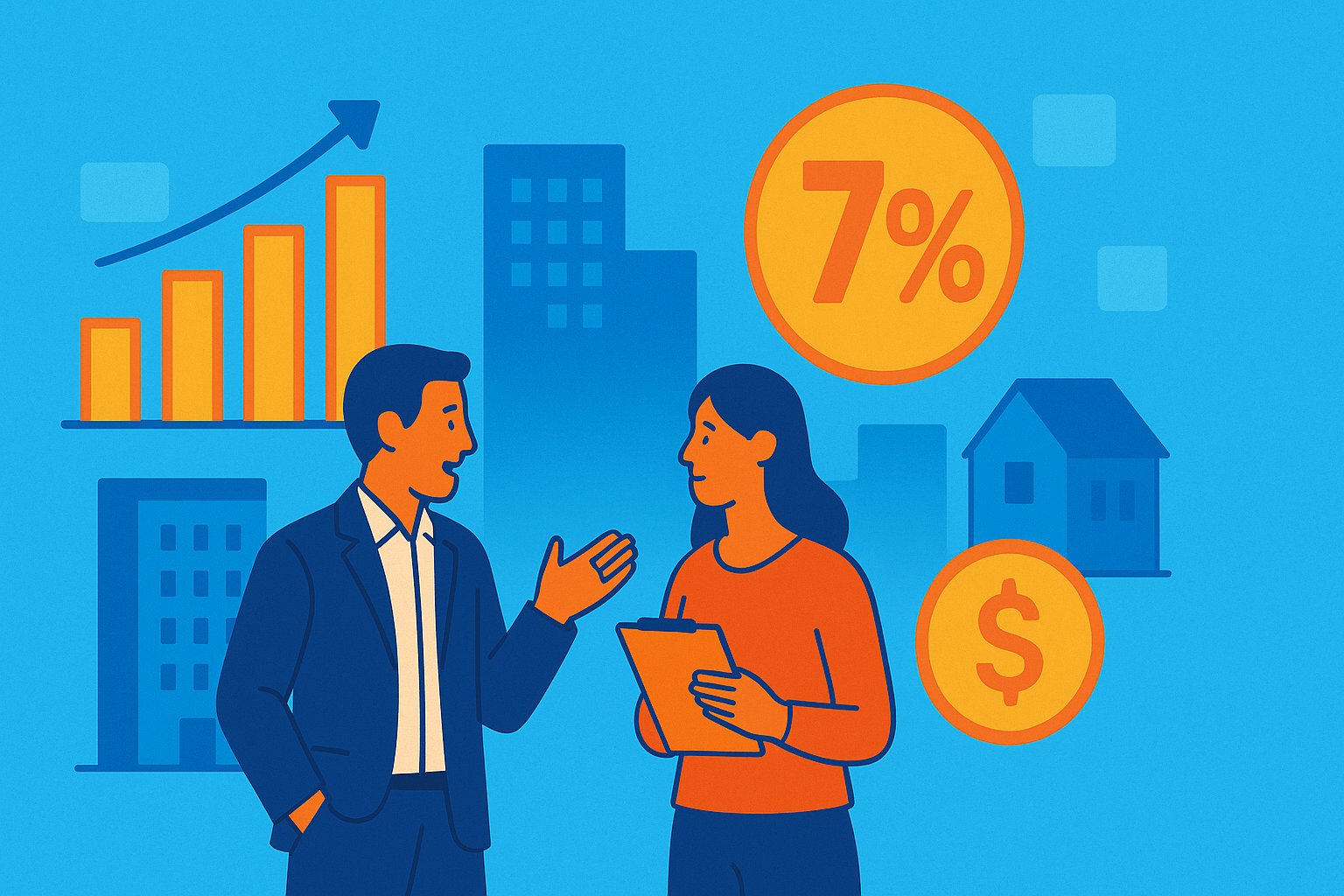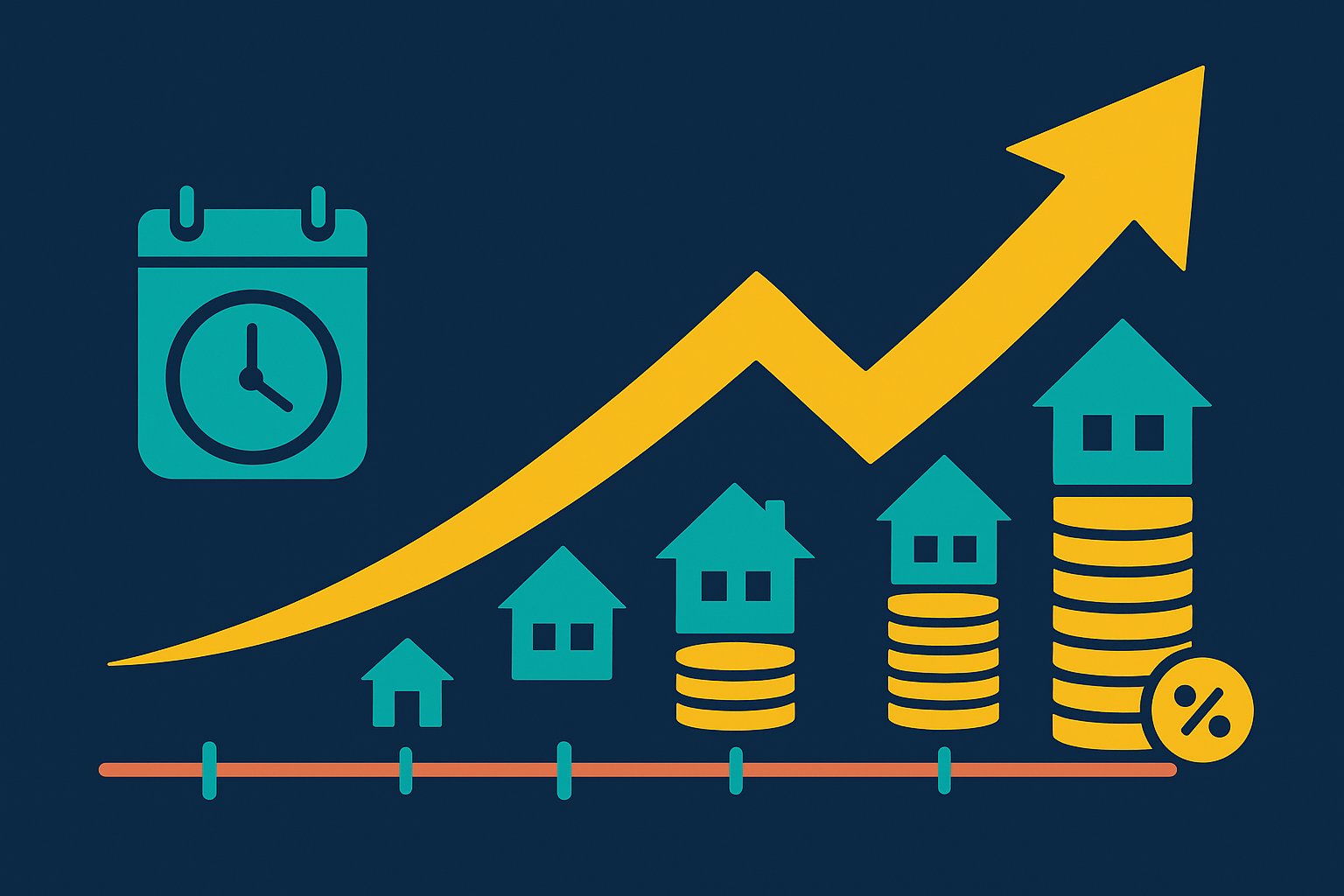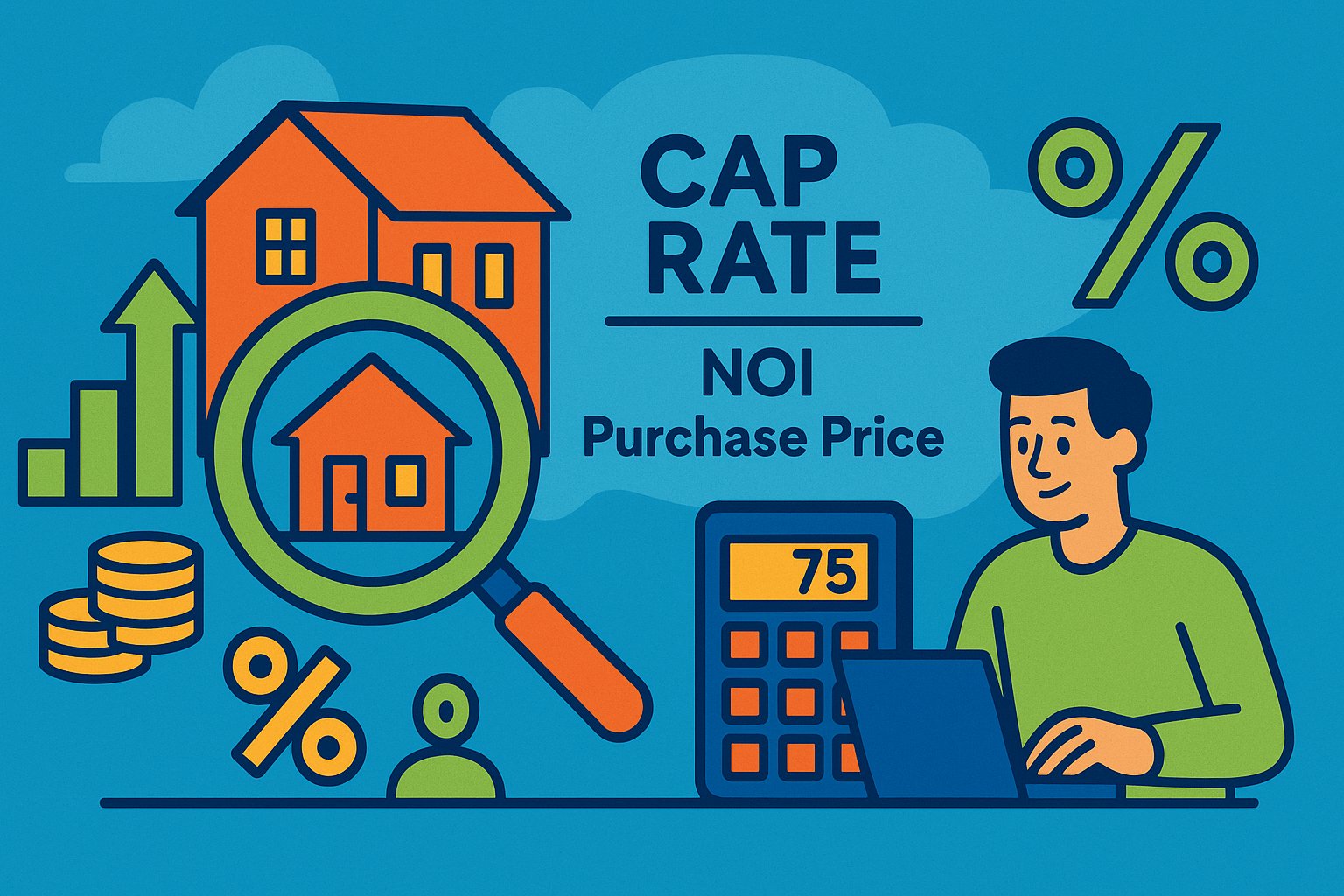Unlocking the 7% Cap Rate: A Gateway to Income and Value
When you spot a crowdfunded property offering a 7 percent capitalization rate, it’s like finding a signpost in the vast landscape of real estate deals. That single figure distills complex financial forecasts into a headline yield—7 percent of the property’s value in net operating income each year. But what does it really mean for your investment strategy, risk tolerance, and long-term wealth goals? In this exploration, we’ll unpack the significance of a 7 percent cap rate, show you how it compares across markets, reveal its implications for financing and cash flow, and guide you in aligning this metric with your portfolio aspirations.
The Essentials of Cap Rate: More Than Just a Number
At its core, a cap rate is calculated by dividing a property’s projected net operating income (NOI) by its purchase price or current valuation. In practical terms, a 7 percent cap rate indicates that if you bought the asset outright—without leverage—you’d expect annual NOI equivalent to 7 percent of your investment. Unlike metrics that focus solely on cash in hand, cap rate abstracts away financing to reveal the property’s intrinsic income-generating power. It becomes the universal yardstick for comparing diverse asset types, markets, and deal structures on an even playing field—especially crucial in crowdfunding, where you evaluate dozens of offerings through an online portal.
Why 7 Percent? Contextualizing the Yield
A 7 percent cap rate straddles the line between conservative core yields and opportunistic higher-risk assets. In prime coastal metros—where competition for stabilized multifamily and Class A office buildings compresses cap rates into the low 4 percent range—7 percent would look like a distressed bargain or a heavily value-add play. Conversely, in secondary or tertiary markets with growing demand but more limited capital flow, a 7 percent yield aligns with well-underwritten stabilized assets trading at market norms. Understanding this spectrum ensures you read the cap rate in context: 7 percent in Dallas might speak to a stable suburban apartment community, while the same figure in Phoenix could imply a property requiring light renovation or lease-up.
Calculating 7% in Dollar Terms: From NOI to Investment Value
Translating cap rate into actionable insights starts with the NOI figure. If a sponsor projects $210,000 in annual NOI, dividing that by 0.07 suggests a $3 million valuation. As an investor, you reverse-engineer this to gauge whether the assumed purchase price matches comparable sales in that submarket. A cap rate implies both yield and implied market value. If recent arm’s-length transactions in the neighborhood traded at 6 percent cap rates, a 7 percent deal signals a potential value gap—either an attractive discount or hidden risk factors. By modeling various NOI scenarios—such as a 5 percent vacancy uptick or a 3 percent increase in operating costs—you see how robust that 7 percent yield remains under stress.
Financing Effects: Leveraging a 7% Cap Rate
While cap rate measures unleveraged yield, most crowdfunding equity investments sit alongside debt financing. If you secure a loan at 65 percent loan-to-value (LTV) with a 4 percent interest rate, your cash-on-cash return can far outpace the 7 percent cap. Imagine a $3 million purchase with $1.05 million equity and $1.95 million debt. The 7 percent NOI yields $210,000. After servicing debt interest—$78,000 annually—$132,000 flows to equity, translating into a 12.6 percent cash-on-cash return. This leverage amplifies returns but also heightens sensitivity to rent dips or rate hikes. In floating-rate environments, rising borrowing costs can erode the CoC spread, so align your financing strategy with market forecasts and sponsor lock-in provisions.
Risk Calibration: What a 7% Cap Rate Says About Market and Asset Quality
Higher cap rates generally imply higher perceived risk—whether from market fundamentals, asset condition, or sponsor execution. A well-maintained suburban apartment complex in a growing metro might credibly trade at 7 percent if lenders demand a risk premium over ultra-prime downtown assets. But a structurally challenged property—one with deferred maintenance or lease-up hurdles—might also need a 7 percent yield to attract investors. Disentangling these drivers calls for rigorous due diligence: inspect third-party engineering reports, review regional rent growth trends, and assess sponsor track records in similar rehab projects. A robust 7 percent deal stands on sound fundamentals and transparent underwriting rather than on distressed concession.
Cash Flow Dynamics: Timing and Consistency of Distributions
Cap rate abstracts annual income yield, but real-world cash flows arrive on varied schedules—monthly rent checks, quarterly distributions, or lump-sum refinance proceeds. For a 7 percent cap rate, confirm how the sponsor plans to monetize NOI: consistent monthly or quarterly dividends stabilize investor expectations, while debt refinancing events can trigger unscheduled principal paydowns. If distributions depend heavily on a sale or debt recapitalization, your cash-on-cash yield may lag until exit, making the 7 percent yield more of a theoretical aspiration than an actualized income stream. Understanding distribution mechanics ensures you match your liquidity needs and reinvestment plans.
Tax Implications of a 7% Cap Rate Investment
Real estate crowdfunding investments often pass through tax advantages—most notably, depreciation deductions that offset taxable income. A property with a 7 percent cap rate might generate taxable NOI of $210,000, but depreciation allowances can shield a significant portion of that from ordinary income tax. Depending on cost segregation studies and asset class allocations, investors may offset up to 80 percent of cash distributions on paper, enhancing after-tax yields. However, upon sale, depreciation recapture at 25 percent plus capital gains tax can bite into net proceeds. Aligning holding period with tax planning—perhaps through 1031 exchange rules—maximizes the real after-tax impact of that 7 percent headline yield.
Benchmarking 7% Against Alternative Investments
Comparing real estate yields to other asset classes helps you gauge opportunity cost. A 7 percent yield on a stabilized rent-producing property contrasts with corporate bond yields in the 4 percent range, offering superior income potential and inflation hedge. Versus publicly traded REITs—often yielding around 5 percent—a 7 percent cap rate signals a premium for illiquidity and concentrated risk. Against stock dividends averaging 2 to 3 percent, the gap widens further. However, the trade-off is time horizon and operational risk: crowdfunded deals lock capital for years, and sponsor misexecution can wipe out capital. Contextualizing cap rate yield within your broader portfolio ensures you weigh these trade-offs wisely.
Sponsor Alignment: How 7% Reflects Management Incentives
Crowdfunding sponsors structure deals to balance investor return hurdles with their own promote incentives. A 7 percent cap rate may serve as the sponsor’s minimum distribution target before profit splits activate. For example, investors might receive a 7 percent preferred return on equity, after which the sponsor begins to share in incremental profits. This arrangement aligns sponsor motivation with investor income goals—higher yields unlock sponsor upside. Scrutinize the distribution waterfall to see how a 7 percent hurdle influences promote thresholds and profit splits. A transparent waterfall ensures the cap rate you pin faith to translates into actual cash flows and aligns sponsor execution with your financial interests.
Case Study: Dissecting a 7% Crowdfunded Deal
Take a 50-unit suburban apartment community benchmarked at a 7 percent cap rate. The sponsor projects $280,000 in NOI on a $4 million acquisition. You deep-dive into rent rolls, observing current occupancy at 90 percent and rent comps showing 5 percent upside. Operating expenses line items match third-party market surveys. With a detailed renovation plan aiming to boost rents by 10 percent over 18 months, the stabilized cap rate might compress to 6 percent—implying equity appreciation. Financing at 70 percent LTV and 3.5 percent interest delivers a 13 percent cash-on-cash return. Stress-testing a 10 percent vacancy spike still yields a 6 percent CoC, affirming the deal’s resilience. This case demonstrates how a 7 percent cap rate weaves through underwriting, operations, and financing into a cohesive investment narrative.
Building a 7%-Anchored Portfolio Strategy
Embracing 7 percent cap rate deals as portfolio anchors combines yield consistency with value potential. Consider laddering investments across submarkets at or near that yield level, diversifying geographic and asset-class risk. Purchase stabilized assets in mature markets at 7 percent for reliable income, and allocate a smaller tranche to light value-add opportunities that target 7 percent today with upside to 8 or 9 percent yield during renovation. Mix debt-heavy and equity-heavy structures to smooth cash distributions and manage leverage risk. Regularly rebalance as market cap rates shift—redeploying capital when yields compress below your 7 percent threshold to find fresh opportunities that meet your income criteria.
Monitoring Market Shifts: When 7% Evolves
Market dynamics constantly reshape cap rate landscapes. Rising interest rates can push cap rates higher as debt costs increase, making 7 percent deals more prevalent but reflecting broader market risk. Conversely, robust property demand and limited supply compress cap rates downward, making 7 percent deals scarce and more attractive. Stay vigilant: track regional transaction data, lender rate movements, and sponsor pipelines. Platforms that publish real-time cap rate heat maps help you spot when 7 percent moves from a baseline yield to a rare premium. Timely monitoring ensures your 7 percent benchmark remains relevant and that you capture alpha when market inflections occur.
Avoiding the 7% Trap: Common Pitfalls
While a 7 percent cap rate offers compelling yield potential, don’t be seduced by the number alone. Beware of sponsors overstating NOI through optimistic rent projections or understating expense reserves. Scrutinize local property tax trends, insurance cost escalations, and maintenance realities to validate NOI line items. Investigate neighborhood comparables to confirm purchase price alignment. Recognize that high leverage can amplify CoC yields at the expense of heightened default risk if cash flows falter. Finally, ensure your investment horizon matches the asset’s projected stabilization timeline—locking capital into a 7 percent cap rate deal that requires extended lease-up may undermine your liquidity needs.
The Future of 7% Cap Rates in Crowdfunding
As real estate crowdfunding matures, innovative deal structures may further refine cap rate interpretations. Hybrid debt-equity offerings could split the 7 percent yield between fixed interest and equity upside, offering nuanced risk-reward profiles. Tokenization may enable fractional trading at implied cap rates, revealing live market sentiment on yield sufficiency. Data analytics will sharpen submarket cap rate benchmarks, delivering hyper-local insights down to neighborhood blocks. For investors, these advances promise deeper granularity and more dynamic yield management—all centering on that pivotal 7 percent benchmark.
Translating Cap Rate into Confident Action
A 7 percent cap rate in real estate crowdfunding is no mere statistic; it’s a strategic beacon guiding your analysis from underwriting through portfolio construction. By dissecting NOI assumptions, contextualizing market norms, aligning financing structures, and stress-testing cash flows, you unlock the true meaning of that yield figure. Anchoring your investments to a well-vetted 7 percent cap rate provides a balanced approach—combining stable income, value potential, and sponsor alignment. As you harness this metric within a disciplined due diligence framework, you’ll invest with confidence, knowing you’ve translated a single number into a comprehensive strategy for enduring property wealth.




